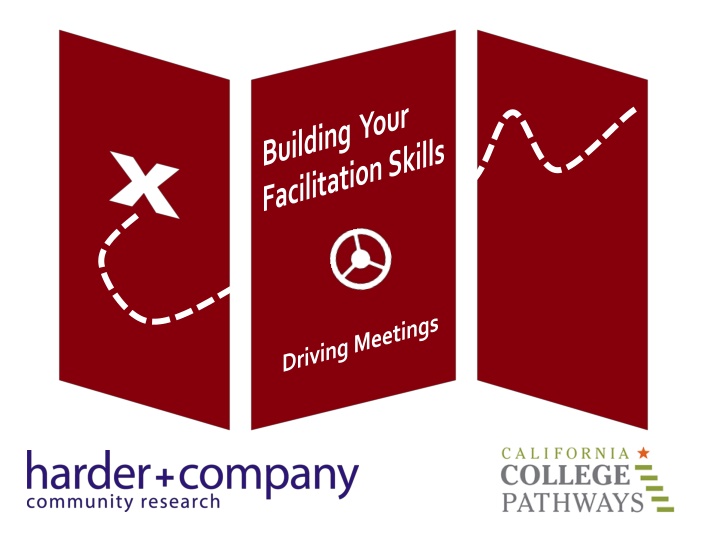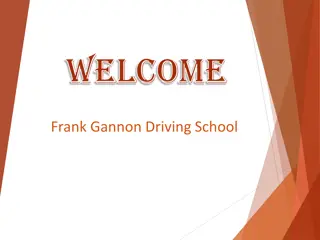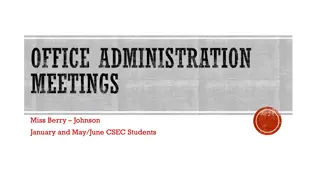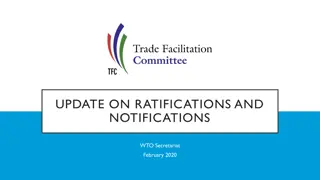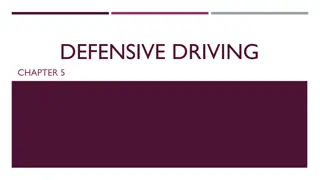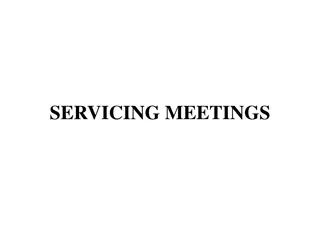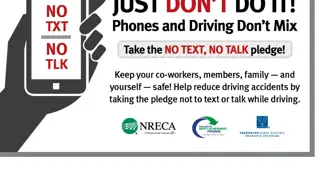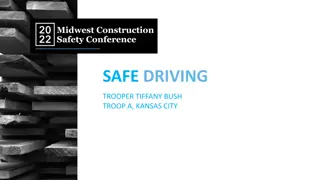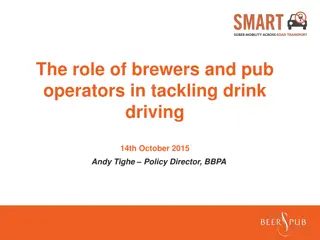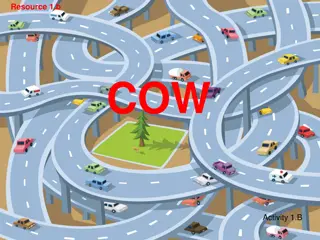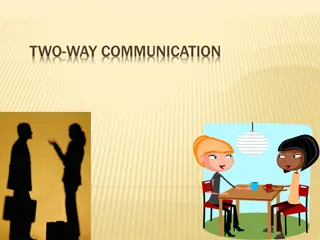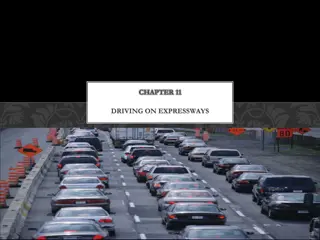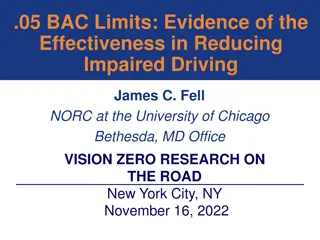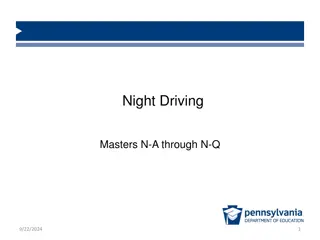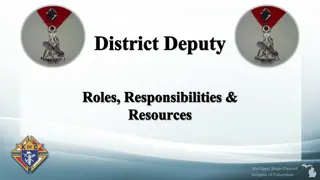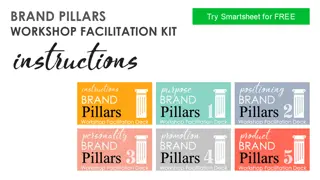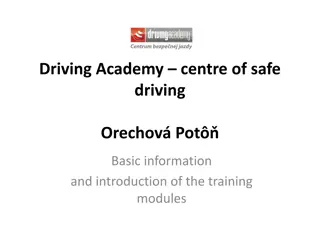Building Your Driving Meetings - Effective Facilitation Skills
Today's webinar focuses on building your facilitation skills to effectively manage group behavior and enhance meeting outcomes. Learn the role of a facilitator, team roles, and strategies for managing group dynamics.
Uploaded on Mar 02, 2025 | 1 Views
Download Presentation

Please find below an Image/Link to download the presentation.
The content on the website is provided AS IS for your information and personal use only. It may not be sold, licensed, or shared on other websites without obtaining consent from the author.If you encounter any issues during the download, it is possible that the publisher has removed the file from their server.
You are allowed to download the files provided on this website for personal or commercial use, subject to the condition that they are used lawfully. All files are the property of their respective owners.
The content on the website is provided AS IS for your information and personal use only. It may not be sold, licensed, or shared on other websites without obtaining consent from the author.
E N D
Presentation Transcript
Building Your Driving Meetings
Introduction Call-in number is (415) 655-0051 and access code is 412-216-979. To submit live questions, click on the Questions panel, type your question, and click Send Presentation materials and audio will be posted at www.cacollegepathways.org
Todays Panel Karrie Tam Michelle Magee About Harder+Company Harder+Company Community Research is a comprehensive social research and planning firm with offices in San Francisco, Davis, San Diego, and Los Angeles, California. Our mission is to help our clients achieve social impact through quality research, strategy, and organizational development services. www.harderco.com
Purpose & Overview Second webinar of a two-part series from the John Burton Foundation California College Pathway s project to strengthen your network Today we will focus on facilitating meetings An effective meeting facilitator supports a group to do their best thinking
Building Your Facilitation Skills By the end of the webinar, you will Understand how to effectively facilitate meetings Learn how to manage a group Gain concrete strategies on facilitation during each stage of group behavior Have a ready-to-use guide and tools to put into practice
Recap from Last Webinar: Role of the Facilitator
Team Roles facilitator time keeper note taker participant
Role of a Facilitator The facilitator... Draws out opinions and ideas Focuses on the how and what Helps the group stay on topic Supports full participation Summarizes discussions and conversations Brings closure to the meeting with an end result or action Maintains neutrality
Team Behavior Stages of Convergent and Divergent Thinking groan zone convergent make choices divergent create choices Types of Divergent Thinking Generating alternatives Free-for-all open discussion Gathering diverse points of view Unpacking the logic of a problem Types of Convergent Thinking Evaluating alternatives Summarizing key points Sorting ideas into categories Arriving at general conclusions
Examples of Team Behavior Divergent Thinking Convergent Thinking
Divergent Thinking: Strategies for Getting Ideas Out Brainstorm Use active listening Draw out opinions Support full participation
Brainstorming Strategies Brainstorming Best Practices Everyone should agree on the question or issue being brainstormed Don t spend too long brainstorming; 10-15 min should work well Never criticize ideas Write every idea on a flip chart; make sure the words are visible to everyone at the same time to avoid misunderstandings and remind others of new ideas Leave explanations and clarifications until later
Brainstorming Strategies Round Robin 1 2 Have participants share their ideas, moving one- by-one around the group. Allow participants 5- 10 min to write ideas.
Brainstorming Strategies Team Idea Map 1 2 Give the group a well-defined topic and have participants brainstorm individually for 5-10 min. Ask participants to share their ideas in random order. As ideas are put forward, chart them on a large idea map. 3 Allow participants to consider the map and think about new ideas that have emerged or associations between them. The group can then prioritize and/or take action on emerging ideas.
Brainstorming Tool Sticky Notes 2 1 Allow participants to write ideas on a sticky note. Then, have participants cluster their ideas in the middle of the table or on a wall. 3 The group is then allowed to pull out one or more ideas for inspiration. With these notes, the team members can create new ideas and variations, or piggyback on existing ideas.
Active Listening Techniques Encouraging: Convey interest by using non-committal words with a positive tone I see... Tell me more... That s interesting... Restating: Help the speaker grasp the facts by putting it in your own words If I understand, your situation is... In other words... Reflecting: Let the speaker know you understand by empathizing with the speaker s basic feelings So you feel that... You were pretty disturbed about... Summarizing: Pull important ideas, facts, etc. together by restating and reflecting major ideas and feelings These seem to be the key ideas... If I understand you, you feel this way about this situation...
Groan Zone: Strategies for Managing Conflict and Difficult People Use ground rules Accept, deal, defer Take a break Use body language Stop the meeting Use encouraging language
Parking Lot When the conversation goes off track: Designate a chart labeled Parking Lot to park ideas When the conversation gets off topic, briefly stop the meeting and write the off-topic idea on the chart Before ending the meeting, return to the Parking Lot list and decide as a group how to address the ideas
Ground Rules When a group member dominates the conversation: A simple ground rule is to establish that Everyone participates: share the floor This sets up the expectation that you want to balance participation Enforce this ground rule during the meeting
Accept, Deal, Defer When a group member is confrontational: Accept that what they are saying is true; don t ignore it Deal with it right there by spending some time on the issue Defer it to the group for a decision about what to do
Take a Break/Discuss Later When a group member is confrontational: When less confrontational tactics haven t worked, you can deal with this issue outside the room, at a naturally- occurring break in the action
Use Body Language When a group member has side conversations: Make eye contact Smile (or don t smile) Change your seating/standing position
Stop the Meeting When a group member has side conversations: Comment that it is difficult for you to hear the main discussion or concentrate on the topic Check in with the group Example: I sense we are losing people s attention and interest, can we do a check-in to see where people are on this topic?
Use Encouraging Language When group members are not participating: Ask open-ended questions and language to engage group members and encourage follow-up questions Example: Could you please tell us more about...? Example: That s interesting, what do others think about... Example: Go on, we d love to hear more...
Convergent Thinking: Strategies for Setting Priorities and Making Decisions Generate a list of options Agree on criteria Vote Summarize and rate areas of agreement
Priority Setting Narrow down and prioritize decisions: 1) Generate a list of options 2) Have the group agree on criteria for selecting and eliminating options 3) Identify each option and have members vote by writing down the number of the item or placing a sticker next to it 4) The options with the most votes are then prioritized for further discussion 5) When eliminating ideas, it is good to check the group for strong opinions to the contrary
Decision Making Structured discussions: 1) Help members agree on criteria for selecting options 2) Have members take turns expressing their opinion without discussion 3) Summarize the areas of agreement and have the group discuss areas of disagreement 4) Stop the group at various points to see how close they are to consensus 5) The facilitator may want to use straw polls in between, continuing the discussion until it reaches an appropriate level of agreement
Closing the Meeting Tips: Review the meeting results Confirm any key agreements Identify next steps Determine when a follow-up meeting will be held, setting a date, time and location Evaluate the meeting through a feedback form or ask participants to quickly identify what they liked most, what they liked least, and what they would do to improve it Congratulate the group on a job well done!
Tools are available for download at www.cacollegepathways.org/reso urces
